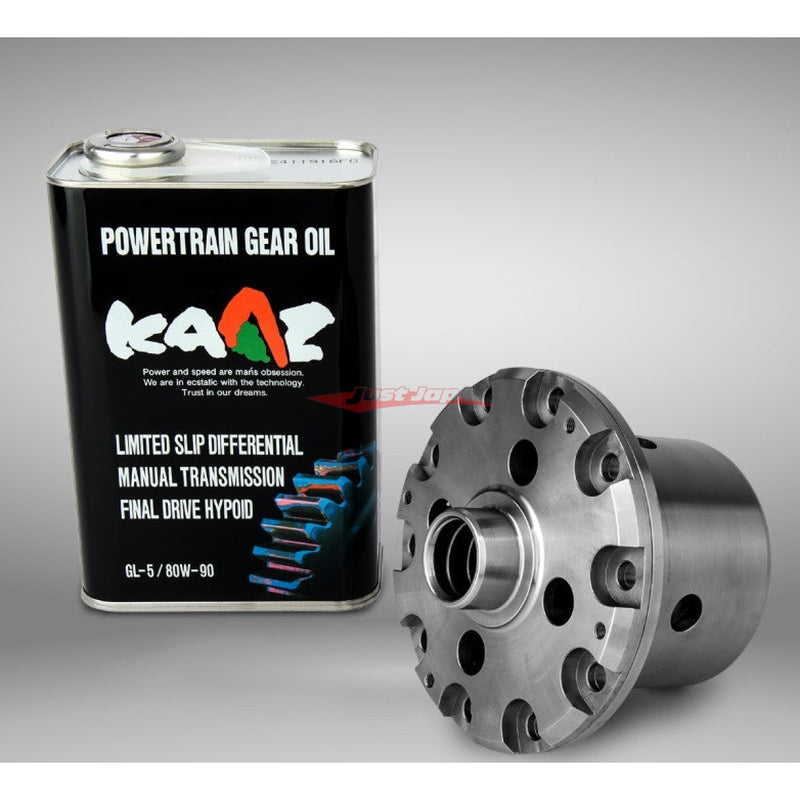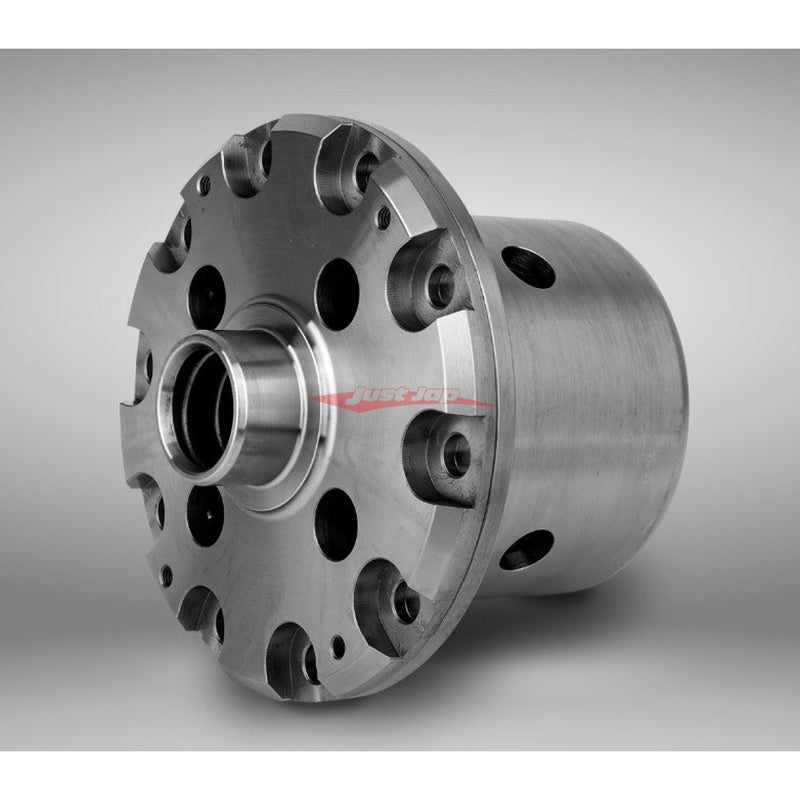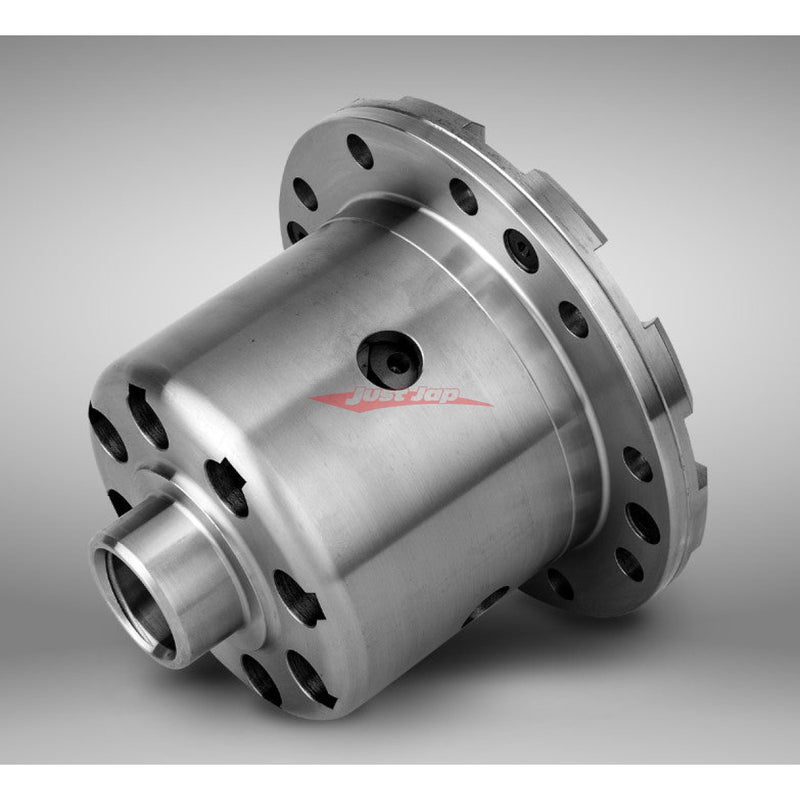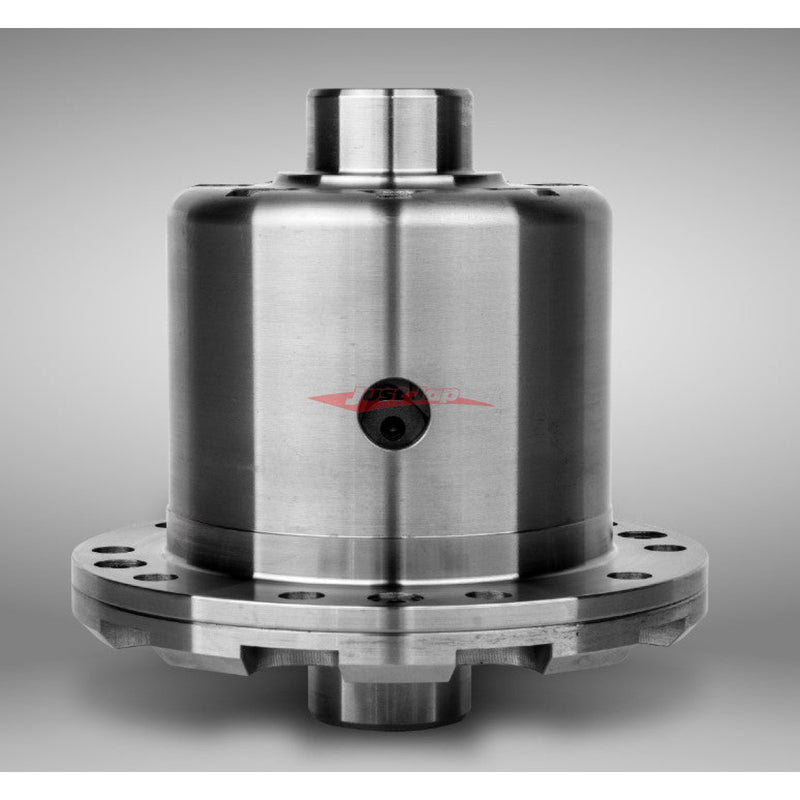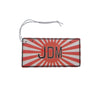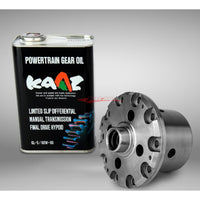

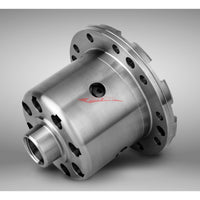

Description
A KAAZ LSD has several (8 to 24) internal clutch plates. The LSD is activated by pressuring the clutch plates which will produce a very strong locking performance and superior response during performance driving.
In general, a Clutch Type LSD has pressure rings and friction plates inside the differential case. The LSD acts as a standard differential when a car is moving straight or the rotational difference between left and right wheels is similar. Once there is a rotational difference among wheels, the cross axis, which is set in the middle, will press the pressure rings, then the pressure rings will transfer the movement to the clutch plates. When all the clutch plates are engaged, both wheels are locked and the torque is transferred equally to both wheels.

KAAZ offers two types of limited slip differentials: 1.5-way and 2.0-way. The two different configurations reflect the design of the cam grooves, which as a result allows the limited-slip differential to perform differently under acceleration and deceleration. Depending on the type of racing desired and the level of skill, choosing the proper type could enhance and optimize performance.
1.5 Way Differential
The 1.5-way differential is recommended for most types of motorsport driving. On acceleration, the 1.5-way optimizes the performance, which is followed by a lighter lockup during deceleration. This makes for the ultimate traction on road racing. Although some drifters use KAAZ’s 1.5-way limited slip differentials, KAAZ’s 2.0-way LSD offers much better performance for drifting applications.

2.0 Way Differential
Since drifting requires a near analog (on or off) full locking of the differential, a high preload, high ramp response, and max clutch pack arrangement will generally deliver the best results. With a 2.0-way KAAZ LSD, the engine braking (coming off the throttle in gear) delivers a similar locked condition, making the car as predictable as possible during switchbacks and the like. Since a gear-type LSD never locks both wheels, a tremendous amount of heat will build up as it oscillates the power delivery to the rear wheels. KAAZ’s 2.0-way LSD is designed to maintain sideway motion in the rear even during shifting, making it a much better option for drifting.

ON throttle: The blue arrows represent the force being applied to the clutch discs during throttle input. A 1.5- and 2.0-way LSD will all have the same behavior when the throttle is applied, as long as the cam angle, preload, and clutch arrangement are the same.
When throttle and torque input into the differential is light, the applied force on the clutch packs is light. Heavy throttle input increases the force and the amount of slip.
OFF throttle: This is where having a 1.5- or 2.0-way LSD makes a difference. When there is no throttle input and the vehicle is decelerating thanks to engine braking (not vehicle braking), a 2.0-LSD has the same cam angle for accel. and decel. and as a result, it will deliver the same amount of slip limiting based on the torque input. A 1.5-way uses different cam angles to add less locking on decel. than acceleration.

To Sum It All Up...
It’s sometimes the parts that you never see that affect performance the most. In the case of limited slip differentials, an enthusiast can now direct power to twice as many drive wheels. The payoffs can be seen in both straight-line and cornering performance. When the budget permits, a KAAZ LSD can offer significant strength and performance advantages over an OEM unit. When you are ready to stop slipping and start gripping, a KAAZ LSD should be part of your plan.
Specifications:
- 12 Plates for medium power levels
- 1.5 way
- Rear Differential
- 2L Gear oil included
- Fits cars equipped with the factory LSD option
Vehicle Compatibility:
- Honda S2000 AP1/AP2
Specifications
SKU DBH2010
Availability 10-15 Days
You may also like...
Trusted by over 100,000 customers
Your Cart
Your cart is currently empty.
